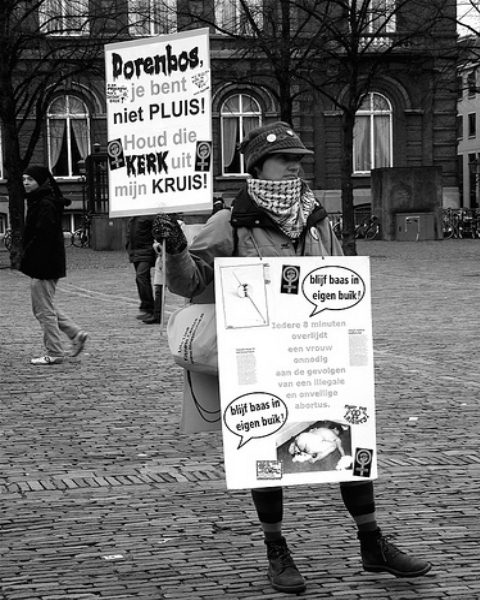
The current debate on agenda-setting provides two explanations for why new issues such as immigration or abortion are politicized in Western democracies. Some argue that new issues are driven by new conflict lines in the electorate; others claim these issues garner political attention by being easily integrated into existing conflict lines or cleavages. Speaking as part of the CIS Colloquium series at ETH Zurich last Wednesday, Christoffer Green-Pedersen positioned himself in the second camp.
Green-Pedersen argued that new issues get politicized along old cleavages. In most European democracies, the political salience of an issue will not only depend on its attractiveness to the electorate, but also on its positioning along the traditional cleavages of ‘left vs right’ or ‘church vs state’. The logic is simple: Established cleavages provide an easily comprehensible interface for parties and voters to engage with new issues. If an issue can be related to pre-existing conflicts, then it becomes easier to explain to voters; as such, it makes sense for political parties to integrate them into their agendas.
The success of environmental issues, for example, can be explained by the fact that they are built on known left vs right tensions over capitalism. Similarly, foreign policy issues often relate to Cold War conflicts between the right and the left.
Cleavages are, of course, not the same in every society. Abortion and euthanasia are easily explained to Dutch voters, who are well-accustomed to the secular vs religious debate. The issues have not found much traction in Denmark, however, where this cleavage is historically less significant.
Another reason why old cleavages continue to play an important role in agenda setting, according to Green-Pedersen, relates to the dynamics of coalition-forming. Parties are likely to take on issues which align with the divisions between party blocs; that is, they will be wary of politicizing issues which are important to their traditional allies. Swedish moderate right-wing parties, for instance, are reluctant to speak out against immigration, due to their centrist coalition partners being rather more liberal on this issue.
Green-Pedersen also highlighted the importance of framing in the politicization of issues. He used the example of immigration, which was framed as a menace for blue-collared workers in the 1970s to mobilize leftist voters; its more recent, cultural-nationalist framing aims to appease rightist voters. In Green-Pedersen’s view, then, it is changing coalition alignments and/or perceptions of the electorate that drove this change, as the issue and the cleavages appear rather static. Another explanation came during the Q&A session from Hanspeter Kriesi, who argued that rather than new issues being built on old cleavages, issues are reinterpreting cleavages through continuous dialogue.
Others have raised doubts over Green-Pedersen’s reductionist view on agenda-setting, claiming that he fails to account for other, non-electoral, factors driving politics. When these issues are increasing in salience, is this really a good time to sacrifice research on the altar of parsimony?

